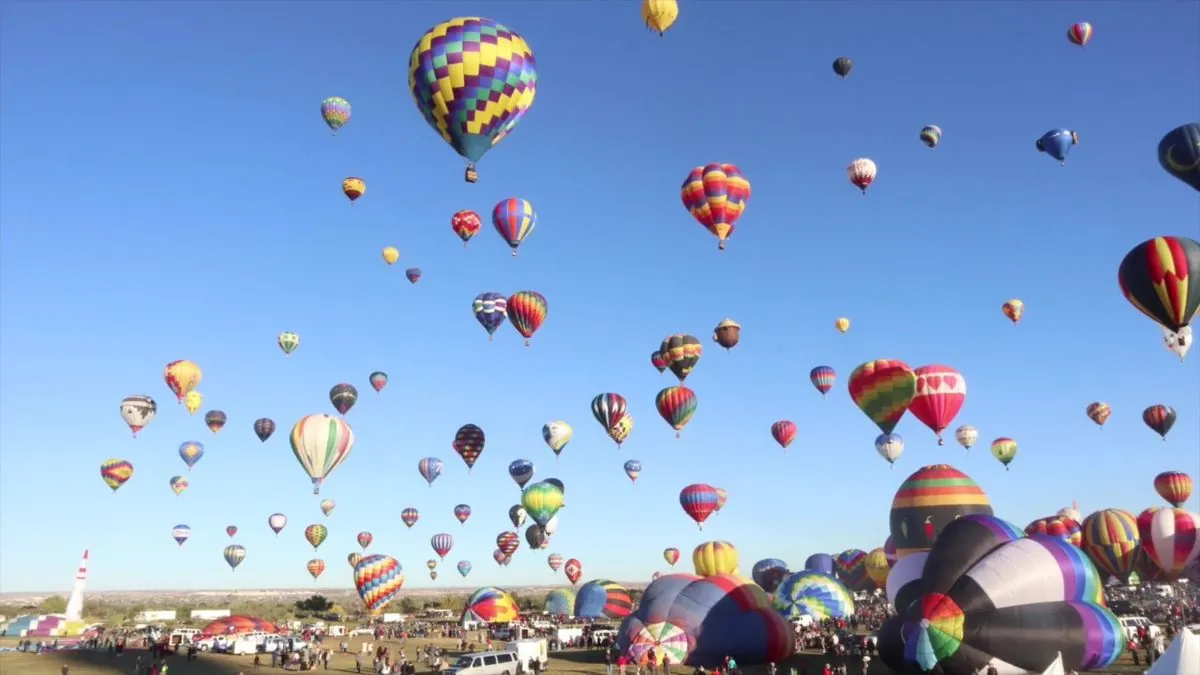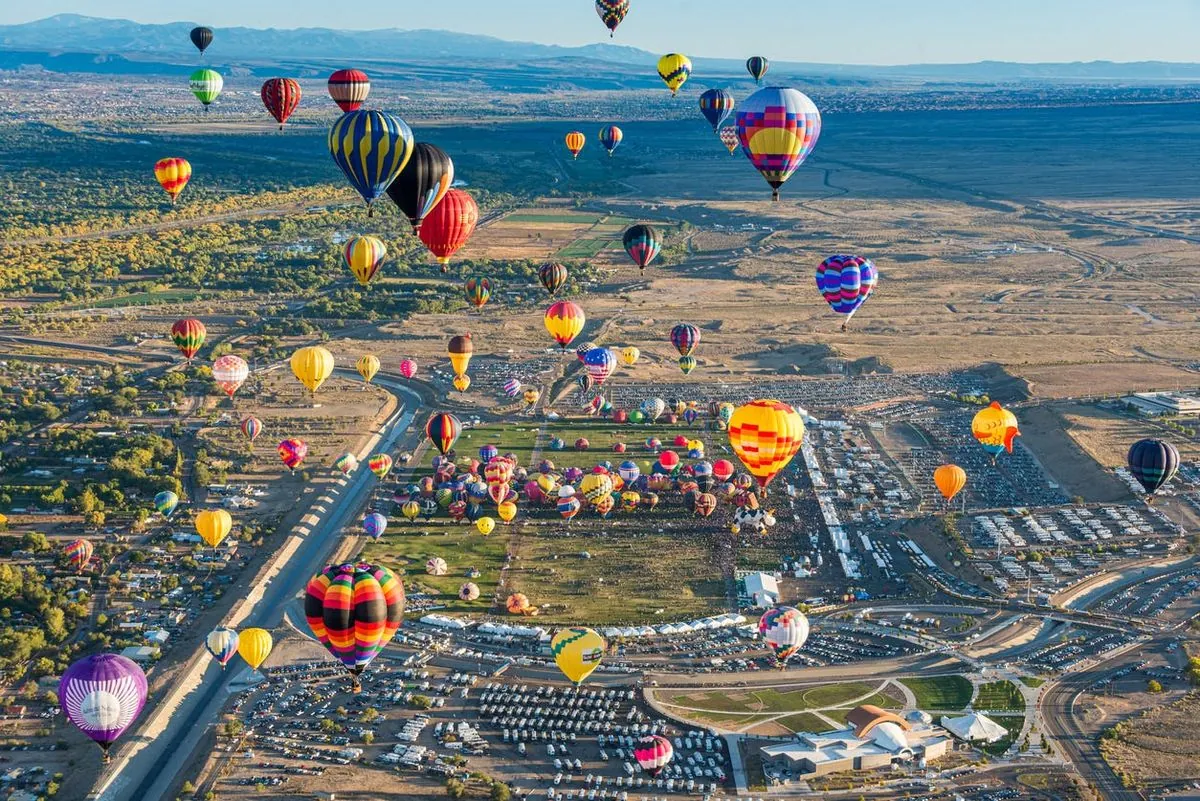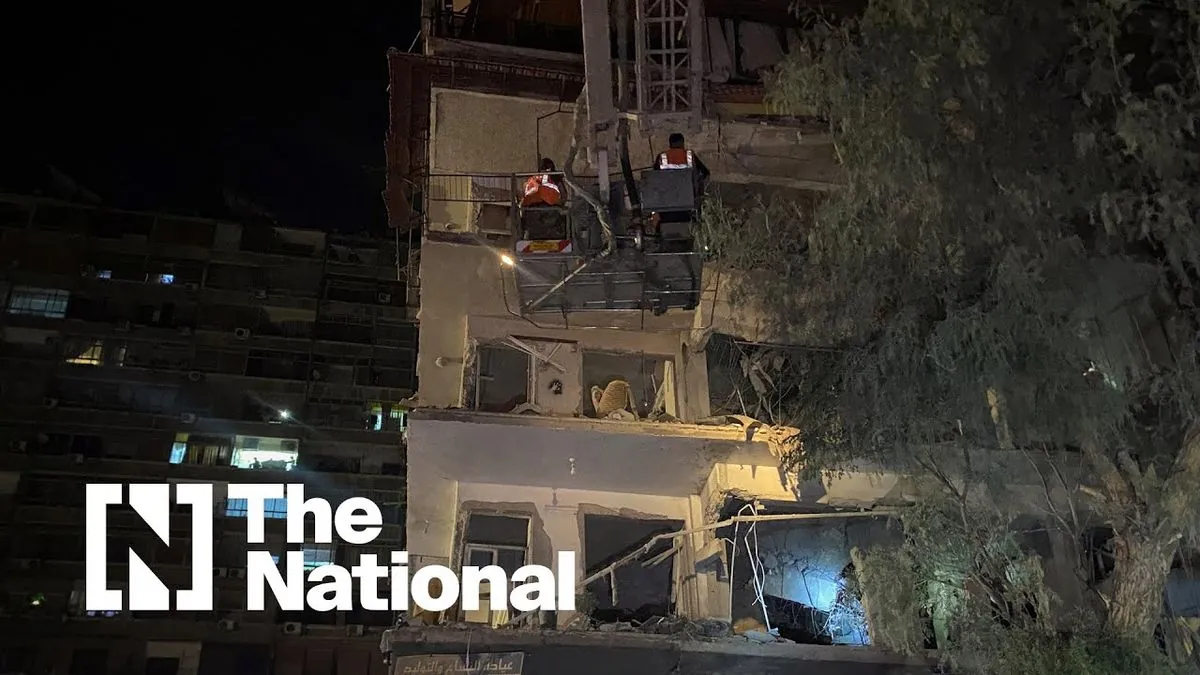Albuquerque Balloon Fiesta: Record Heat Challenges 52nd Annual Event
The 52nd Albuquerque International Balloon Fiesta faces unprecedented warmth, potentially impacting flight durations. Despite challenges, the world-renowned event promises a spectacular display of colorful balloons and new shapes.

The 52nd Albuquerque International Balloon Fiesta is set to commence on October 7, 2023, amidst unusually warm weather conditions. This nine-day spectacle, which began in 1972 with just 13 balloons, has grown to become the largest hot air balloon festival globally, attracting over 800,000 visitors annually.
The event, known for its breathtaking "mass ascension" where hundreds of balloons launch in two waves, may face challenges due to record-breaking temperatures. On October 2, 2023, Albuquerque recorded its highest temperature this late in the year at 93°F (33.8°C). This warmth could potentially impact flight durations and fuel usage for the participating balloons.
Troy Bradley, an experienced balloon pilot, offers reassurance: "These are really non-issues from a spectator's standpoint. I don't see any difference other than they won't be freezing in the pre-dawn hours." Despite the warmer conditions, the event's appeal remains strong, with visitors still able to experience the unique opportunity of being within arm's reach as the giant balloons are unpacked and inflated.
The festival's spokesman, Tom Garrity, explains the potential effects of the heat on balloon flights: "With cooler weather, pilots are able to fly for longer duration. But when you have warmer temperatures, it just means that you pop up, you go up a little bit and you come back down. So just some shorter flights."

Interestingly, Albuquerque is renowned for its unique "Albuquerque Box" wind pattern, which allows balloons to navigate back to their launch sites. This phenomenon, combined with the city's generally favorable ballooning conditions, has contributed to the event's longstanding success and its significant economic impact, contributing over $200 million to Albuquerque's economy annually.
This year's fiesta will feature 106 special shape balloons, including 16 making their debut. Among the newcomers is Mazu, a balloon modeled after the sea goddess deeply rooted in Taiwanese culture and traditions. These special shapes are part of the festival's "Special Shape Rodeo," a popular attraction that showcases the creativity and engineering prowess of balloon designers.
While the daytime events promise to be spectacular, the fiesta also includes night events such as "balloon glows," where tethered balloons illuminate the night sky. These events offer a different perspective on the balloons and add to the festival's magical atmosphere.
It's worth noting that modern hot air balloons, developed in the 1960s, have come a long way since the first passenger flight in 1783. Today's balloons can fly in temperatures as low as -20°F (-29°C) and use an average of 30 gallons of propane per hour of flight. The envelopes of these balloons can be as tall as a 10-story building, making them impressive sights both on the ground and in the air.
As the Albuquerque International Balloon Fiesta celebrates its 52nd year, it continues to captivate audiences and push the boundaries of ballooning. From its humble beginnings to its current status as a world-renowned event, the fiesta stands as a testament to human ingenuity and the enduring appeal of flight.
"With cooler weather, pilots are able to fly for longer duration. But when you have warmer temperatures, it just means that you pop up, you go up a little bit and you come back down. So just some shorter flights."


































